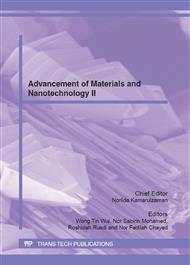p.81
p.88
p.93
p.100
p.105
p.111
p.119
p.124
p.129
Development of Gold Nanoparticle Radiotracers for Investigating Multiphase System in Process Industries
Abstract:
This paper describes the development of colloidal Au-SiO2 with core-shell structure nanoparticle radioactive tracers by neutron activation in nuclear reactor that produce Au-198 (T1/2=2.7 d) emitting gamma ray of 412 keV. Using conventional citrate-reduction method, gold nanoparticles were prepared from its corresponding metal salts in aqueous solution then coated with uniform shells of amorphous silica via a sol-gel reaction. The citrate-reduction-based method provides gold nanoparticles with higher concentration and narrow size distribution. By using transmission electron microscopy (TEM), the resultant of particle size and silica coatings could be varied from tens to several hundred of nanometers by controlling the catalyzer and precipitation time. Au-SiO2 core-shell nanostructure is good to prevent the particles from getting agglomerated resulting in a big mass. In addition, silica surface offer very good chances that make the hydrophobic and hydrophilic behavior on the gold nanoparticles. EDXRF spectrum has proven that Au-SiO2 core-shell nanoparticles sample consists purely of a gold and silica particles. This target material of radiotracer application used to investigate multiphase system in process industries without disturbing the system operation.
Info:
Periodical:
Pages:
105-110
Citation:
Online since:
July 2012
Price:
Сopyright:
© 2012 Trans Tech Publications Ltd. All Rights Reserved
Share:
Citation:


